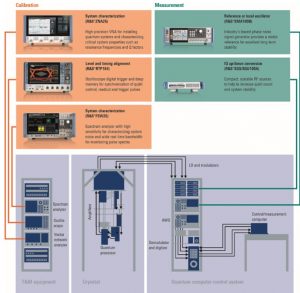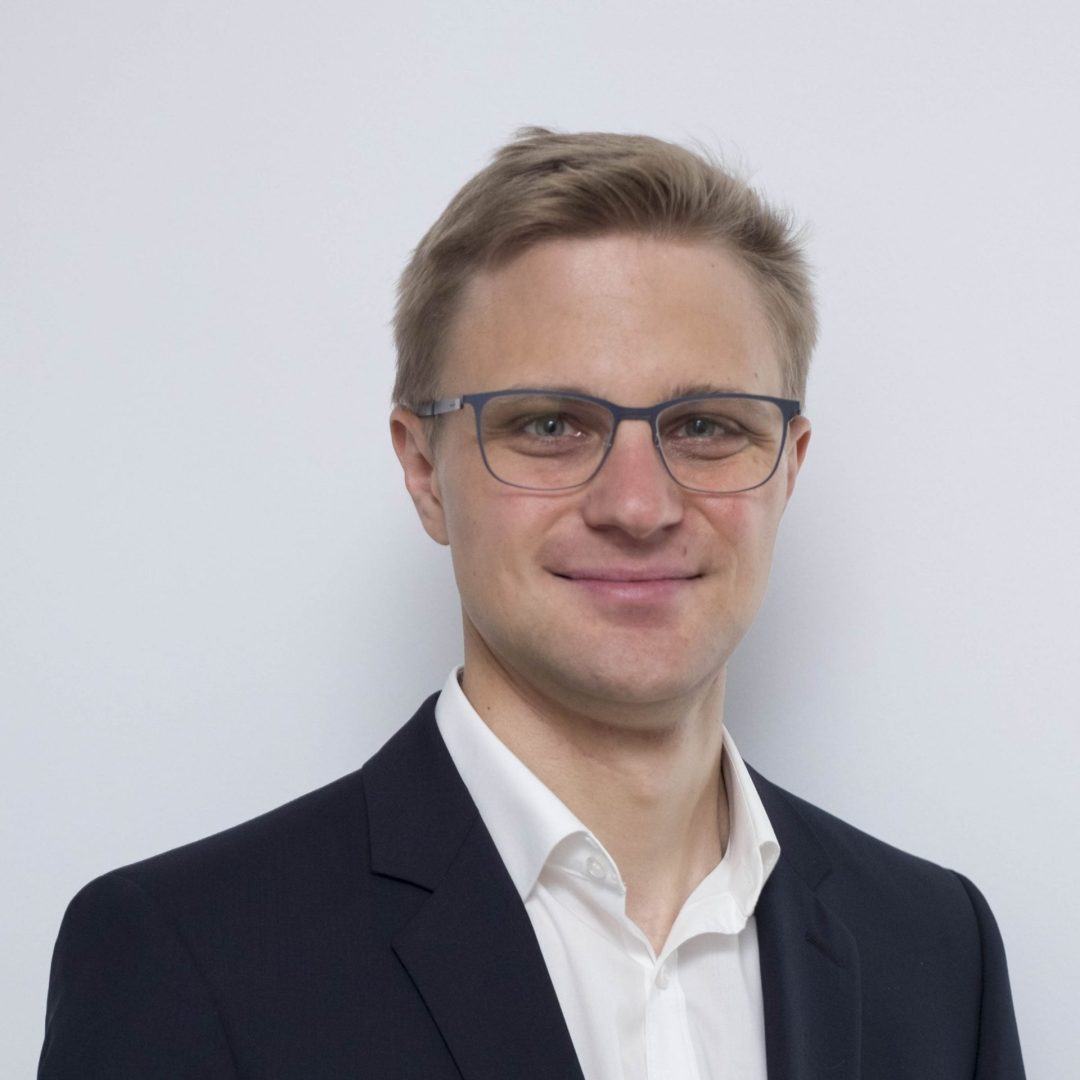During the last decade, considerable advances have been made to bring quantum computing closer to realization. The technology offers many possibilities, thanks to its unprecedented calculation speed and alternative methodology, and is expected to have a great influence in everyday life, with applications such as molecular and material simulations, climate analysis and cryptography. However, this powerful technology poses new technical challenges and also means that testing quantum computing systems calls for innovative T&M solutions.
Great Expectations
The Gartner hype cycle describes technology hype, and quantum computing has earned its place in it. According to claims by many of its experts, quantum computing will change everything forever. The potential for decryption could obviously affect distributed ledger technologies like blockchain that are slated to support financial systems of the future. While the Bitcoin system, for example, is not expected to be mined by classical computers until 2140, brute force decryption using a quantum computer could theoretically mine every token almost instantaneously.
Although it is fair to say that quantum computers could spell the end for conventional cryptography, the reality is likely to be somewhat less dramatic. The decryption estimate is based on the assumption that quantum computing will become usable and affordable on a widespread scale. From the current perspective, this certainly seems achievable, if not an inevitability. Serious computing players such as IBM, Honeywell, Google and Microsoft and research institutes such as the QuTech, as well as newer specialist startups, have active programs for putting quantum computing in the cloud and inviting engagement from the wider computing community. There are also introduction packs and development kits to help new users get started.
Widening the User Base
The advancements that could be made possible by quantum computing are significant and will almost certainly drive further progress as users come up with more diverse and demanding workloads and discover ways of handling them using quantum technology. Equally important is that quantum computing is expected to allow more people from a wider variety of backgrounds to come into contact with the technology; to understand it, use it, and influence its ongoing development.
Although the age of quantum computing is closer, it still remains at a very experimental stage. In the future, commercial cloud services could provide affordable access in the same way as scientific or banking organizations can today rent cloud-based AI applications to handle complex workloads that are billed according to the number of computer cycles used. Hospitals, for example, are taking advantage of genome sequencing applications hosted on AI accelerators in hyperscale data centers to identify genetic disorders in newborn babies. This process costs just a few dollars and the results are back within minutes enabling timely and potentially life-saving interventions by clinicians.
Quantum computing as a service could further transform healthcare and also deeply affect many other fields such as materials science. As an example, creating a simulation of a caffeine molecule is incredibly difficult to do with current computers, demanding the equivalent of over 100 years of processing time. A quantum computer could theoretically complete the task in a matter of hours. Other applications that could benefit from quantum computing include climate analysis, transportation planning, bioinformatics, financial services, encryption and codebreaking.
Creating a Roadmap
Despite its anticipated, unprecedented power of calculation, quantum computing will not kill off binary computing or turn the entire world upside down. Unlike conventional binary bits that are in one state or another, quantum bits (qubits) can be in both states, 0 and 1, enabling quantum computers to process and store exponentially more information. This exponential advantage of quantum computers might one day open up possibilities undreamed of in computing for currently unsolvable problems.
There are drawbacks. When measured, the state of each qubit collapses probabilistically to either 0 or 1, obtaining only 1 bit of information per qubit. Due to this probabilistic collapse, quantum algorithms need to be repeated many times to build statistics of the outcome and finally concentrate a large probability on the correct result. This fundamental feature of the architecture restricts the speedup of quantum algorithms to only certain types of problems, while others can still be better handled by binary computers. Just as quantum mechanics has not replaced classical mechanics for most engineering calculations, quantum computing will not replace binary computing for most every day computing applications.
In addition, building and running a quantum computer is highly difficult and complex. Moreover, the challenges intensify when trying to increase the number of qubits in the system. As with any computer, more parallel data values correspond to more processing power, making increasing the number of qubits a key objective for quantum computer architects. Another key objective is to keep the coherence of the quantum system stable, at lower error rates and for longer periods.
To reach these goals simultaneously, university and industrial research facilities worldwide are investigating various hardware platforms. The development of these quantum platforms is substantially supported by modern microwave technologies in several aspects. Optical systems for quantum computing such as trapped ion and cold atom qubits, need to be complemented by microwave devices to operate acousto- and electro-optic modulators, or to directly drive atomic hyperfine and Zeeman transition in the microwave domain. These hyperfine and Zeeman transitions form qubits with long coherence times of up to tens of seconds (the period for which a value is reliably stored) and require extremely stable microwave equipment to be operated without larger errors. For quantum systems with all transition frequencies in the microwave domain, quantum processors based on superconducting circuits and spin qubits in semiconductors have shown high potential to be scalable at low-error rates. To eliminate thermal noise, these microwave systems need to be cooled to cryogenic temperatures near absolute zero. In addition, high-performance microwave equipment is needed for the external control of the quantum system at room temperature. A pure and low-noise microwave signal helps to reduce the loss of quantum information potentially introduced by the qubit control tone. This is where high-end test and measurement equipment is brought into play, enabling flexible solutions for quantum systems (See figure). Rohde & Schwarz is working with its academic partners to provide stable and compact microwave signal generators to help scale the quantum computing system up, while decreasing the error rate.

Multi-channel arbitrary waveform generators (AWGs) are necessary to obtain high-quality multi-qubit control by generating both RF and microwave pulses with optimized shapes, as required. The output of high-resolution AWGs can either be directly applied at frequencies of less than a gigahertz, for example, to activate interactions between qubits. Or the AWG signals can be up-converted to higher frequencies using external IQ modulators or inputting them to a vector signal generator.
In the process of reading out the results of the quantum computation, high-performance microwave sources are essential, as they significantly mitigate errors due to phase drifts. During the readout, the quantum system interacts with a pulse in the readout circuit, encoding information about the qubit state in the amplitude and phase of the readout signal. This information needs to be extracted during a time which is much smaller than the coherence time of the qubit. This puts substantial requirements on the performance of the cryogenic detection equipment after the quantum system, the room-temperature digitizers, and the digital signal processing. In pursuit of delivering a complete solution, Rohde & Schwarz provides the T&M expertise, to combine with the software and system know-how of quantum computing partners.
Additionally, the search continues for new materials and cleaner fabrication processes to be applied in quantum computing chips, and for test and measurement equipment to help accurately determine the exact properties. To obtain detailed feedback from new fabrication runs, the resonance frequencies and quality factors of the test chips, which can be directly mapped to the coherence times of quantum systems, need to be determined quickly. These characteristic properties can be obtained by multi-tone spectroscopic measurements using a high-performance vector network analyzer (VNA). To further reduce the characterization time, multiple test chips can be measured simultaneously by using a truly multi-port VNA. A suitable high performance VNA can run fast frequency sweeps over a range of 20 gigahertz or more, while maintaining a wide dynamic range to detect undesired resonances and couplings between circuit elements. Moreover, a VNA is an essential tool during the installation of both the room-temperature and cryogenic microwave setups. The DUT-centered operating concept makes an efficient characterization of all active and passive RF components of the microwave system possible, thus helping ensure an optimal performance of the whole setup. During the operation of the quantum setup, a VNA can assist in the debugging process of the quantum computing chips themselves.
Rohde & Schwarz also provides various other test and measurement solutions for its partners to help them increase the performance and capabilities of their quantum computer setups. For example, to read out quantum information with high precision, a careful design and verification of the detection equipment between the quantum chip and the room-temperature digitizer is crucial, as described above. The detection equipment includes superconducting parametric amplifiers, which operate close to the quantum limit of amplification, and ultra-low noise semiconductor amplifiers, the performance of which needs to be verified. High-sensitivity spectrum analyzers from Rohde & Schwarz are ideal devices to obtain the noise performance and compression characteristics of these amplifiers and of the complete detection setup.
Furthermore, Rohde & Schwarz spectrum analyzers are useful for the measurements and calibration of IQ mixers, as spectrum analyzers detect undesired sidebands of the mixers. A third relevant application of a spectrum analyzer with real-time capabilities is the reliable detection of short sporadic interferences.
Another example of how the test and measurement solutions from Rohde & Schwarz support quantum engineers and research is the precise temporal synchronization and alignment of microwave pulses and triggers which are the basis of all quantum algorithms. A high-speed oscilloscope enables real-time measurements of the signal integrity and time-correlated analysis of multiple signals verifying the synchronization of readout and control pulses across multiple qubits. Advanced oscilloscopes also help to detect undesired jitter events and can thus create an essential contribution to the stability of the whole quantum setup.
Rohde & Schwarz works with its partners in the quantum world to extend and customize its products for a better solution fit. This also allows the company to learn how to apply the knowledge gained to other products in the portfolio simultaneously, and hence deliver even better performing solutions across the breadth of applications and markets served. Considering the complex technical challenges of quantum computing, the customers need to be able to have confidence in their T&M partner to deliver reliable solutions for this task. Rohde & Schwarz continues to expand the portfolio of leading-edge test and measurement equipment that addresses these needs.
While cloud access will certainly enable more companies and research institutes to take part in the quantum revolution, the challenge of stabilizing quantum computers with a high number of qubits while keeping the price at a competitive level is of vital importance. To ensure this goal, innovative solutions based on thorough research and development are required.




Um einen Kommentar zu hinterlassen müssen sie Autor sein, oder mit Ihrem LinkedIn Account eingeloggt sein.